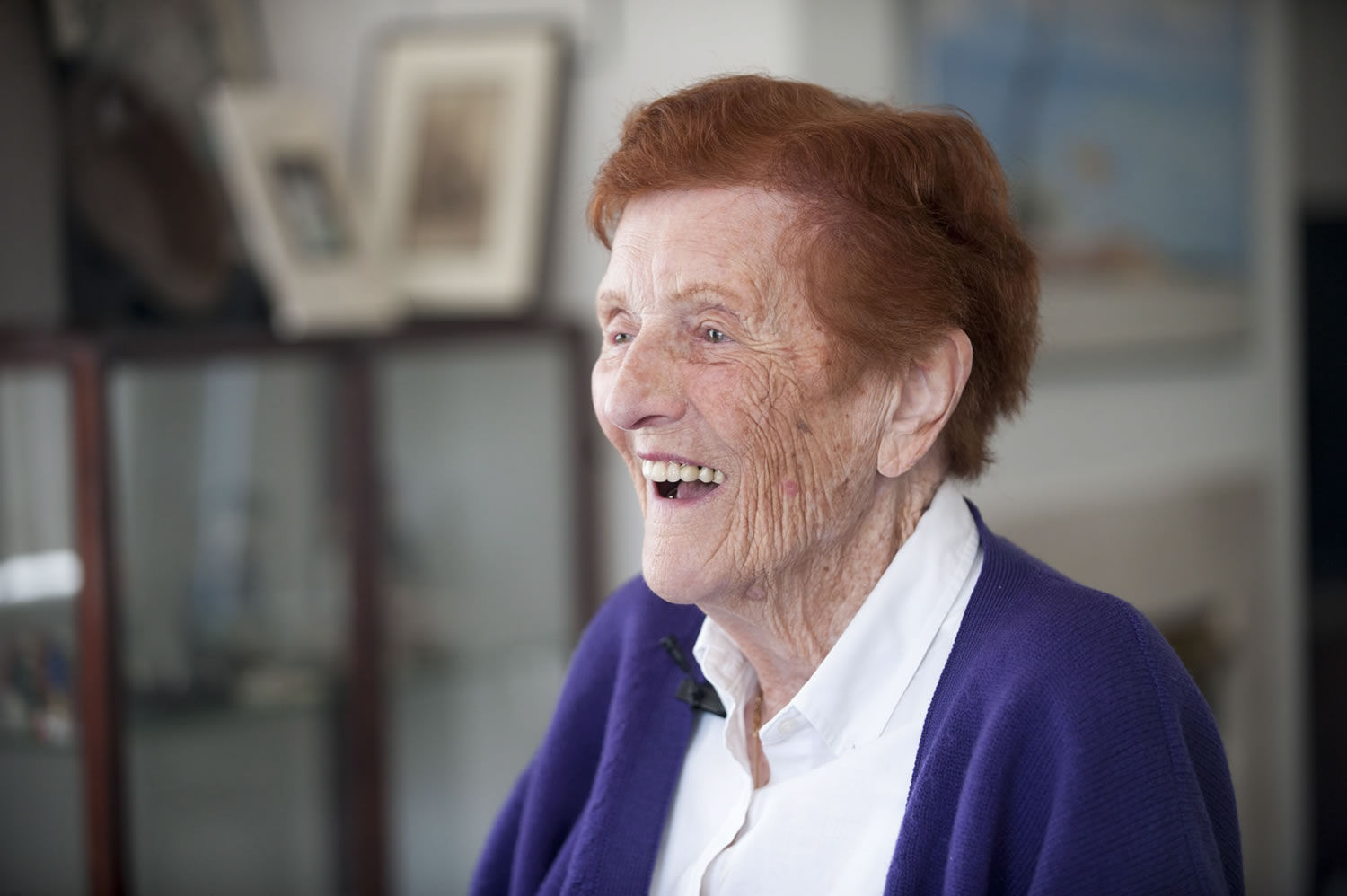When we talked with Martha Frederick back in August, we focused on her top-secret job during World War II. She worked at the University of California as a coal miner.
That’s what she would tell people, anyway.
Frederick died on Nov. 9 at age 93. A remembrance Tuesday at Vancouver Tennis Center will expand her biography. It will salute Frederick as a role model for staying active — including her four national tennis championships in 90-and-older competition. The 10:45 a.m. gathering at the tennis center, 5300 E. 18th St., is open to the public.
“She was a lively, vivacious person, and everyone enjoyed being around her,” said Robin Burak, the tennis center’s membership services coordinator. “My kids grew up around her. At 90, she was still taking lessons from our pros.”
When her mother was in her 80s, Marie Morgan said, the family never told Frederick that maybe it was time to find a less-strenuous pastime.
“Precisely the opposite,” Morgan said. “It was tennis that kept her still alive and healthy.”
The family is donating the four golden balls Frederick won in 90-and-older national championships (two in singles, two in doubles) for the Vancouver Tennis Center’s trophy case to inspire other players.
It’s not just about seniors, Morgan said: Anyone wishing to honor Frederick’s memory can make a donation to fund tennis lessons for kids, through the Vancouver Tennis Center Foundation (vtcf.org).
She lived on her own in Vancouver until September, when she moved to McMinnville, Ore., to be closer to family.
And, no, Frederick did not develop her strength and stamina by digging coal at the University of California. She was part of the Manhattan Project that led to the atomic bomb.
As we noted in our Aug. 12 story, Frederick worked in a machine shop at the radiation laboratory started by professor Ernest Lawrence, who won the 1939 Nobel Prize for physics.
Women in the machine shop milled blocks of carbon and went home covered with a fine black dust.
“It would go through your apron and pants. The skin on our thighs was black. You’d scrub, but it was in your pores,” Frederick told The Columbian.
People would ask about that dust, but her job was part of a top-secret project.
“I told them I worked in a coal mine.”
But, really, it was as good an answer as any. Since it was top-secret, Frederick said, “We didn’t know what we were doing.”
Off Beat lets members of The Columbian news team step back from our newspaper beats to write the story behind the story, fill in the story or just tell a story.




